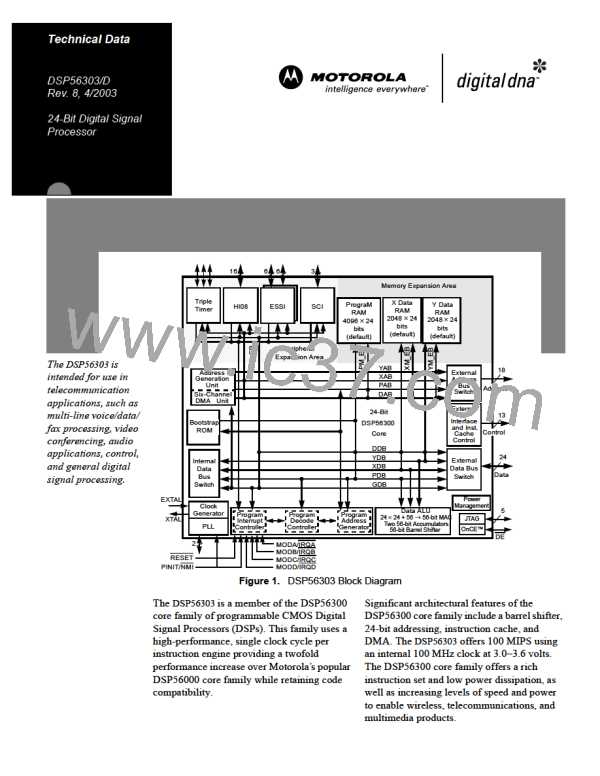Electrical Design Considerations
A complicating factor is the existence of three common ways to determine the junction-to-case thermal
resistance in plastic packages.
• To minimize temperature variation across the surface, the thermal resistance is measured from the
junction to the outside surface of the package (case) closest to the chip mounting area when that surface
has a proper heat sink.
• To define a value approximately equal to a junction-to-board thermal resistance, the thermal resistance
is measured from the junction to the point at which the leads attach to the case.
• If the temperature of the package case (T ) is determined by a thermocouple, thermal resistance is
T
computed from the value obtained by the equation (T – T )/P .
J
T
D
As noted earlier, the junction-to-case thermal resistances quoted in this data sheet are determined using
the first definition. From a practical standpoint, that value is also suitable to determine the junction
temperature from a case thermocouple reading in forced convection environments. In natural convection,
the use of the junction-to-case thermal resistance to estimate junction temperature from a thermocouple
reading on the case of the package will yield an estimate of a junction temperature slightly higher than
actual temperature. Hence, the new thermal metric, thermal characterization parameter or Ψ , has been
JT
defined to be (T – T )/P . This value gives a better estimate of the junction temperature in natural
J
T
D
convection when the surface temperature of the package is used. Remember that surface temperature
readings of packages are subject to significant errors caused by inadequate attachment of the sensor to the
surface and to errors caused by heat loss to the sensor. The recommended technique is to attach a
40-gauge thermocouple wire and bead to the top center of the package with thermally conductive epoxy.
4.2 Electrical Design Considerations
CAUTION
This device contains protective circuitry to
guard against damage due to high static
voltage or electrical fields. However, normal
precautions are advised to avoid application
of any voltages higher than maximum rated
voltages to this high-impedance circuit.
Reliability of operation is enhanced if unused
inputs are tied to an appropriate logic voltage
level (for example, either GND or VCC).
4-2

 MOTOROLA [ MOTOROLA ]
MOTOROLA [ MOTOROLA ]